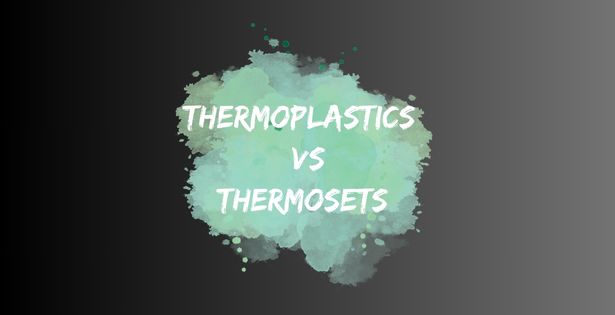Thermoplastics vs. Thermosets for Structural Applications – What’s the Difference?

When considering most polymer composites, one good way to begin to differentiate different materials is to learn the differences between thermoplastics and thermosets. Especially in structural applications, understanding the differences in the two types of composites becomes increasingly useful. Thermoplastics and thermosets are both types of polymers used in structural applications, but they have significant differences in their properties and behaviors:
Chemical Structure
Thermoplastic polymers consist of long molecular chains with weak intermolecular forces. They can be melted and reshaped multiple times without undergoing significant chemical change. Imagine what happens with a milk jug or soda bottle when it is heated – it melts and can be recycled into an entirely new shape or product quite easily.
Thermoset polymers have a cross-linked molecular structure, formed through irreversible chemical reactions during curing. Once cured, they cannot be remelted or reshaped without undergoing decomposition. A thermoset is a permanent alteration of the original materials to form an entirely new “composite” material.
Mechanical Properties
Thermoplastics tend to have lower strength and stiffness compared to thermosets. They sometimes will exhibit better impact resistance and toughness, depending on the material makeup. Thermosets generally have higher strength, stiffness, and dimensional stability compared to thermoplastics. Once cured, they maintain their shape and mechanical properties under high temperatures and loads far better than thermoplastics (in most cases).
Processing
Thermoplastics can be easily processed through methods such as injection molding, extrusion, and thermoforming. Their ability to melt and solidify makes them suitable for complex shapes and recycling. Processing thermosets involves curing through heat and/or chemical reactions. Once cured, they cannot be reprocessed or reshaped. This does limit their suitability for complex manufacturing processes.
Applications
Thermoplastics are widely used in applications requiring flexibility, such as packaging, non-structural automotive parts, and consumer goods. They are gaining traction in structural applications due to advancements in material technology, but still tend to perform poorly compared to thermosets. Thermosets are commonly employed in structural applications where high strength, dimensional stability, and heat resistance are essential, such as aerospace components, electrical insulators, and composite materials for construction.
This last area is where Strongwell and its pultruded thermoset fiber-reinforced polymer composite (FRP) structural shapes and plates really show what is capable with thermosets. Pultruding a thermoset FRP shape makes i-beams, wide flange beams, channels, angles, and a host of other structural components traditionally made from steel light, strong, corrosion resistant, and easier to install and maintain. Thermoplastics are a poor choice in these types of structural applications, although they often pair well with a structural thermoset. The thermoset can provide the structural strength and stiffness while the thermoplastic can provide a better finished appearance or offer other benefits.
In summary, while both thermoplastics and thermosets have their merits in structural applications, the choice between them depends on specific requirements regarding mechanical properties, processing capabilities, and intended application conditions. Thermoplastics offer flexibility and easier recyclability, while thermosets provide superior strength and stability, especially under harsh conditions.